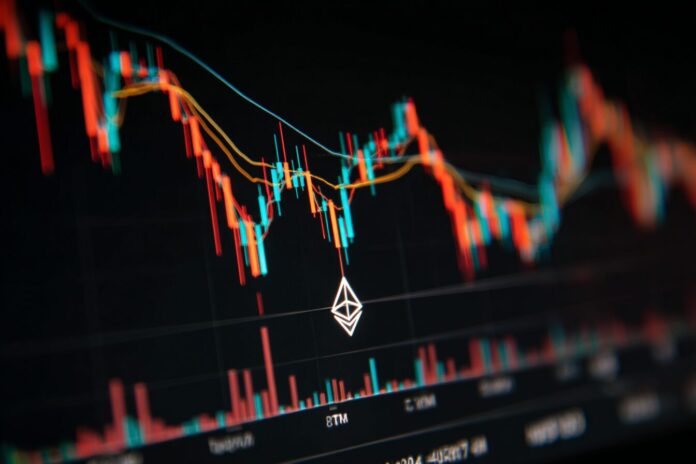Ethereum has recently experienced a notable drop below the $4,400 level, an event that has spurred intense discussions among market participants. Most importantly, the decline has occurred concurrently with significant accumulation by publicly traded treasuries. This dual dynamic emphasizes the resilience of ETH, even amid short-term downward pressure.
Because the cryptocurrency market is influenced by both retail sentiment and institutional maneuvers, the current scenario is naturally generating mixed strategies. Besides that, the evolving technical indicators offer investors a clearer perspective on when to navigate this volatility. Therefore, understanding these trends is key to formulating successful trading and holding strategies.
Detailed Analysis of Recent Price Movements
On August 29, 2025, Ethereum dipped below $4,400, marking a pivotal moment in its ongoing price movement. According to market data, ETH registered a 4% decline within a 24-hour period, with the price hitting $4,398 at 07:16 UTC. This early drop set off a chain reaction that intensified selling pressure, pushing the support levels thin.
By 14:06 UTC, the situation worsened as ETH slid further below $4,300, showing a more pronounced 6.39% decline in just one day. Most importantly, technical analysis indicates that although there were brief rallies above the resistance at $4,450, overall momentum remains bearish, particularly below $4,600. You can learn more details about this decline from Binance’s market update and another related report.
Furthermore, detailed technical indicators from sources such as Blockonomi reveal that the immediate support is currently hovering near $4,320. Because the bears are in control, the potential for further downside is significant if the $4,400 barrier does not hold in upcoming sessions.
Rising Tide: Institutional Investment and Treasury Accumulation
In the midst of this volatility, institutional players are seizing the opportunity to bolster their Ethereum positions. Most importantly, data shows that treasury holdings by publicly traded firms are growing rapidly despite the short-term price decline. For instance, BitMine Immersion Technologies recently made headlines by purchasing 4,871 ETH at a cost of $21.3 million, increasing its total Ethereum allocation significantly. This strategic move has positioned BitMine as one of the largest corporate ETH holders globally.
Because institutional confidence appears to remain strong, other major players such as BlackRock are also boosting their Ethereum exposures. Their iShares Ethereum Trust (ETHA) saw inflows of over $315 million in a single day, adding to overall ETF inflows which totaled $444 million during this turbulent period. Therefore, even as retail sentiment wavers, institutional accumulation signals a long-term vote of confidence in Ethereum’s future. Further insights into these trends can be found via the Coindesk report and the detailed analysis on Economic Times.
Moreover, the contrast between a temporary dip and steady institutional buying might be a major signal for long-term investors. Because many treasuries are increasing their positions, current market dips might in fact create lucrative entry points. This strategy is underscored by the robust flows into ETH ETFs, which illustrate the underlying confidence that institutional investors have in Ethereum’s infrastructure and future protocol upgrades.
Market Sentiment: Caution Today, Opportunity Tomorrow?
The prevailing market sentiment is cautious, fueled by the recent drop and projected short-term risks. Most importantly, indicators such as a record 1 million ETH queued for validator exits and waiting times nearing 19 days add to the bearish pressure. Because these metrics imply deeper liquidity challenges, traders are advised to remain vigilant in the near term.
Besides that, however, prominent analysts like Tom Lee of Fundstrat remain optimistic about a potential bottoming out of Ethereum. Lee, in his recent analysis, predicted that ETH might dip to levels between $4,075 and $4,150 before rallying towards $5,100. Therefore, while current technicals suggest further declines, historical price action and on-chain trends may herald a turnaround. Additional insights can be reviewed from Economic Times and Blockonomi’s technical review.
Investor Strategies: Navigating Volatility with Insight
For those looking to profit from the volatility, the current market environment offers multiple opportunities. Because short-term traders can benefit from price swings, maintaining an agile strategy that monitors critical support levels at $4,320 and $4,400 is essential. Most importantly, these markers may act as early indicators for trend reversals or further declines.
Long-term investors, on the other hand, might view this dip as a strategic buying moment. Transitioning from a reactionary stance to a proactive accumulation strategy could enable investors to capitalize on future upswings. Therefore, the robust institutional buying seen in the public treasuries and ETF inflows reinforces the notion of Ethereum’s underlying value. The consistent inflows further underscore that despite current volatility, there is reliable institutional belief in Ethereum’s technological and ecosystem potential.
Because market narratives often evolve rapidly, keeping a close eye on updated technical analyses and institutional moves is crucial. As market dynamics shift, leveraging the insights provided by comprehensive research may pave the way for more informed investment decisions. For example, insights from Binance and other leading financial sources can provide a stronger foundation for trading strategies.
Conclusion: A Test of Resilience and Strategic Posturing
In conclusion, Ethereum’s dip below $4,400 is not merely a short-term anomaly but part of a larger market narrative shaped by both technical pressures and significant institutional maneuvers. Most importantly, as publicly traded treasuries continue to accumulate ETH despite the slide, there is clear evidence of long-term confidence in the network.
Because both retail and institutional investors are reacting to differing aspects of the same market signals, the current environment offers lessons in resilience and strategic flexibility. Therefore, while short-term volatility may persist, the long-term outlook remains promising, driven by ongoing technological developments and institutional support. These insights present an invaluable perspective for anyone seeking to navigate the crypto landscape with clarity and foresight.



